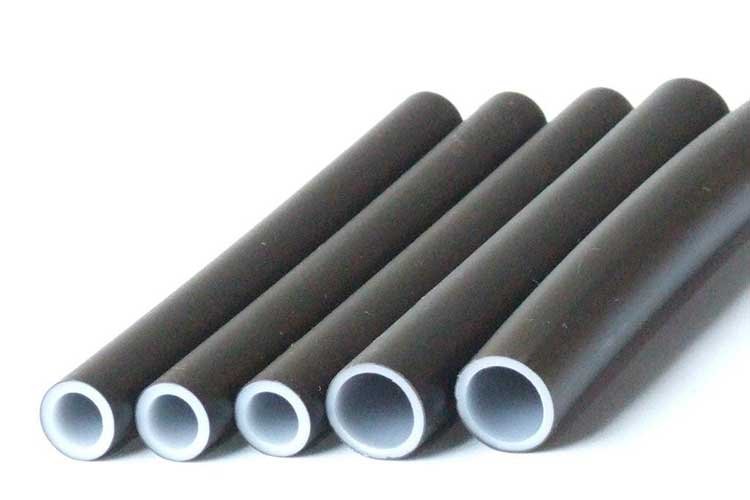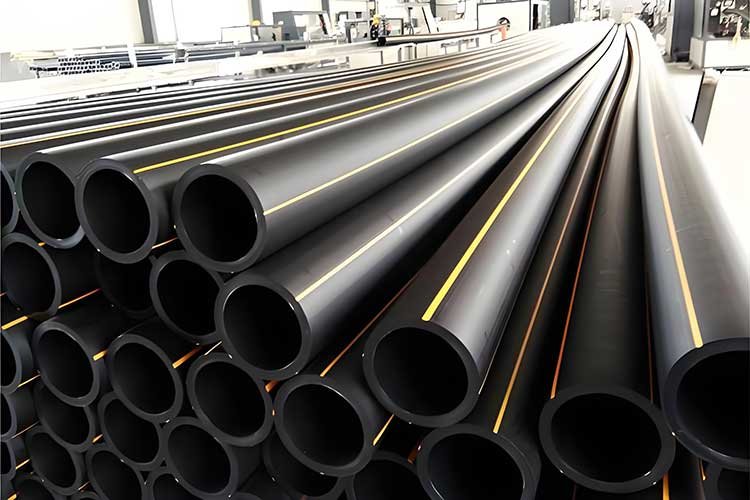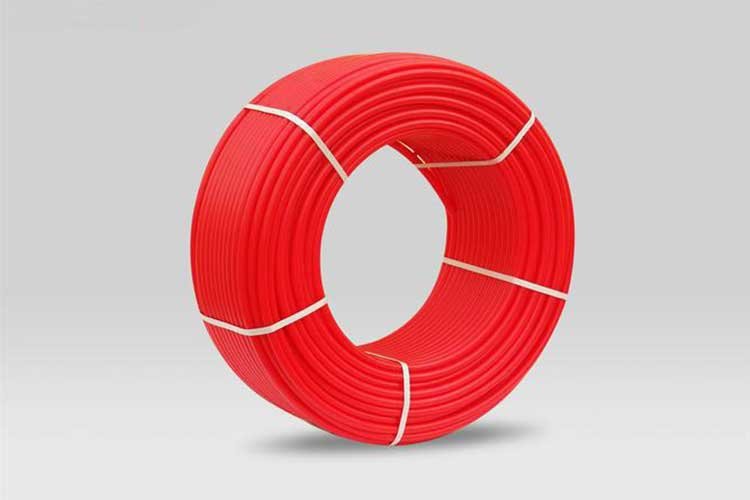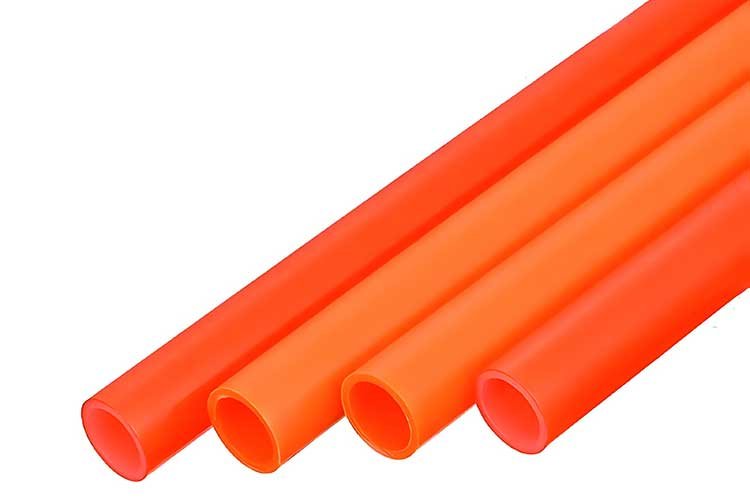Pipa PEX, juga dikenal sebagai pipa polietilena ikatan silang, terbuat dari polietilena. Struktur molekul linier polietilena diubah menjadi jaringan tiga dimensi melalui metode fisik dan kimia, sehingga meningkatkan kinerjanya.
Bahan baku utama untuk pipa PEX adalah HDPE, bersama dengan bahan tambahan seperti inisiator, penghubung silang, dan katalis. Pengubah lain juga dapat ditambahkan jika diperlukan.

Apa itu Pipa PEX?
Pipa PEX, juga dikenal sebagai pipa polietilena ikatan silang, memiliki nama lengkap dalam bahasa Inggris: polietilena ikatan silang, disingkat CLPE, dan biasanya disebut sebagai PE-X. Ini dibentuk oleh polietilen melalui reaksi ikatan silang, yang mengubah molekul polietilen dari struktur dua dimensi menjadi struktur jaringan tiga dimensi. Sifat kimia dan fisik material juga ditingkatkan, dan ketahanan suhu dan tekanan ditingkatkan.
Ketika polietilena berubah dari struktur linier menjadi struktur jaringan, kinerjanya akan mengalami perubahan yang lengkap dan menyeluruh, dan akan memiliki ketahanan aus yang luar biasa, ketahanan terhadap ledakan, ketahanan terhadap pelarut, stabilitas dimensi, ketahanan terhadap retak tegangan, ketahanan terhadap cuaca, ketahanan terhadap radiasi, dan insulasi listrik yang sangat baik. Ini memiliki fleksibilitas suhu rendah yang baik dan ketahanan panas yang sangat baik. Titik pelunakan bisa mencapai 200 ° C dan dapat digunakan untuk waktu yang lama pada suhu 140 ° C. Kekuatan benturan, kekuatan tarik, ketahanan mulur, dan kekakuannya lebih baik daripada HDPE.

Fitur pipa PEX
Tahan panas dan tahan tekanan yang sangat baik
Setelah menjalani perawatan cross-linking, pipa PEX dapat menahan suhu hingga 95°C (95° C) untuk waktu yang lama dan 110°C (110° C) untuk waktu yang singkat, sehingga ideal untuk sistem air panas dan pemanas lantai.
Bahkan pada suhu tinggi, mereka mempertahankan kekuatan mekanik dan ketahanan tekanan yang sangat baik, menahan deformasi atau retak.
Fleksibilitas dan kemampuan menekuk yang luar biasa
Pipa PEX sangat fleksibel dan tersedia dalam bentuk gulungan, sehingga mudah diangkut dan ditangani.
Selama pemasangan, pipa ini dapat dibengkokkan sesuai kebutuhan (dengan radius tikungan minimum sekitar delapan kali diameter pipa), sehingga dapat melewati penghalang dan mengurangi jumlah sambungan, yang secara signifikan mengurangi risiko kebocoran. Hal ini membuatnya sangat cocok untuk tata letak pipa yang rumit, seperti untuk instalasi pemanas di bawah lantai.
Ketahanan terhadap korosi dan kemampuan anti kerak yang sangat baik
Bahan ini sangat tahan terhadap bahan kimia umum seperti asam, alkali, dan garam, dan tidak akan berkarat seperti pipa logam.
Bagian dalam yang sangat halus mengurangi hambatan aliran air dan tidak rentan terhadap pertumbuhan bakteri dan penumpukan kerak, sehingga memastikan aliran air bersih dalam jangka panjang.
Performa antibeku yang baik
Tetap fleksibel di lingkungan bersuhu rendah. Ketika air membeku di dalam pipa, pipa PEX dapat mengakomodasi peningkatan volume es dengan mengembang (tingkat ekspansi dapat mencapai 9 kali volume pipa), dan umumnya tidak membeku dan retak secara langsung seperti pipa yang kaku (meskipun pembekuan dan pencairan yang berulang tetap harus dihindari).

Keuntungan dari pipa PEX
Terbuat dari bahan yang lembut dan fleksibel, PEX lebih tahan terhadap keretakan yang disebabkan oleh pembekuan daripada pipa PVC. Fleksibilitasnya juga membuat PEX lebih mudah dipasang. Pipa PEX dapat menekuk dan melengkung di sekitar rangka struktural dan penghalang lainnya, mengurangi kebutuhan akan lubang dan slot untuk mengakomodasi pipa. Tekukan pada pipa juga menghilangkan kebutuhan akan banyak alat kelengkapan transisi siku, menghemat biaya dan waktu pemasangan.
Aplikasi Pipa PEX
Pemipaan PEX dapat digunakan untuk:
Saluran pasokan air atau sistem distribusi portabel
Aplikasi pemanas lantai bercahaya
Aplikasi perpindahan panas seperti pendinginan lantai dan pencairan salju dan es
Distribusi air untuk aplikasi air panas (termasuk radiator)
Sistem pemadam kebakaran/penyiram perumahan

Kesimpulan
Pipa PEX, dengan ketahanan suhu tinggi, ketahanan korosi, fleksibilitas, dan kemudahan pemasangannya, telah menjadi bahan perpipaan yang disukai dalam konstruksi modern dan teknik kota. Proses sambungan silangnya yang berbeda (A/B/C) beradaptasi dengan beragam aplikasi, termasuk pemanasan, pasokan air, dan aliran fluida industri. Ini secara signifikan mengungguli pipa logam tradisional dalam hal keramahan lingkungan dan umur panjang.